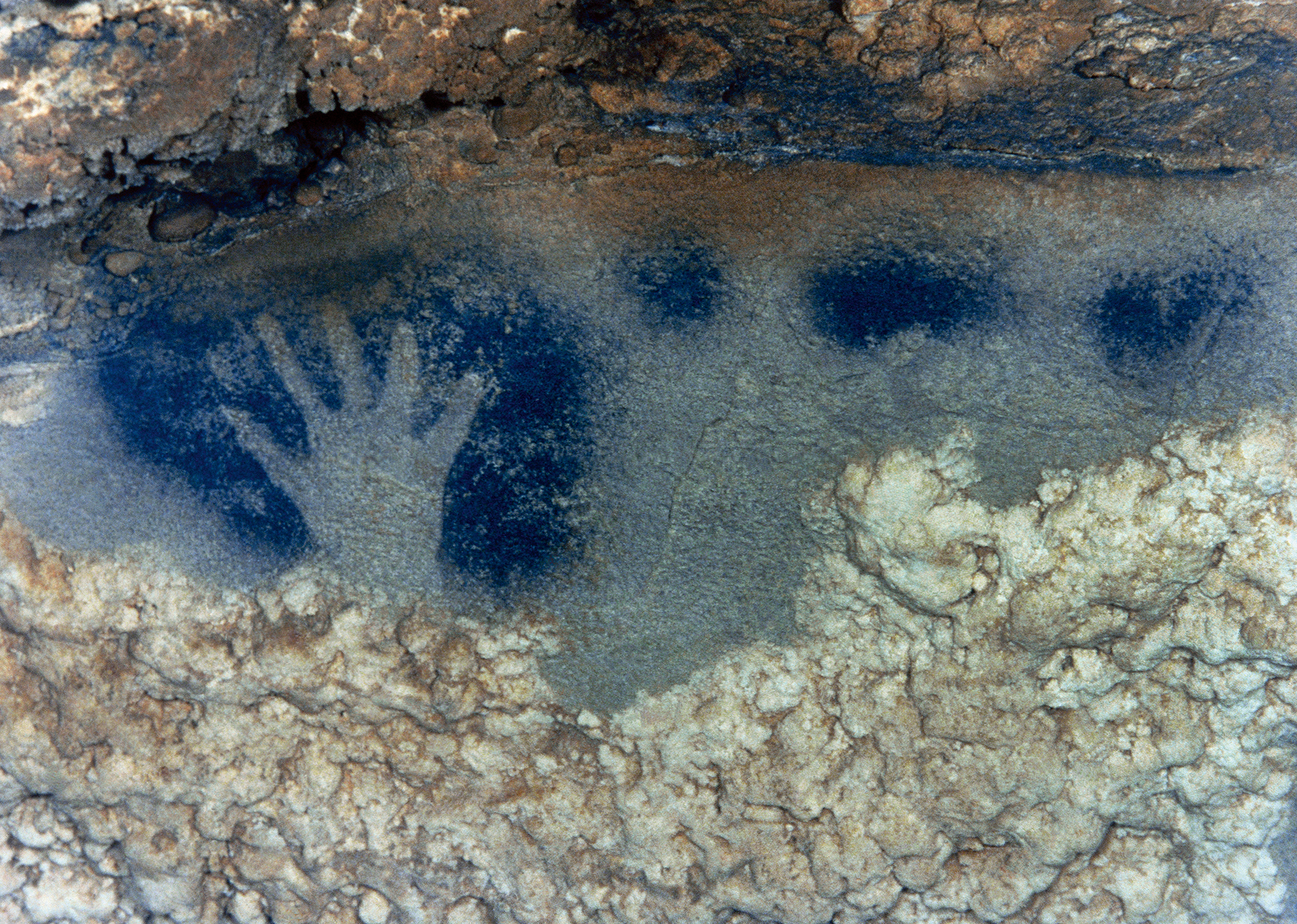
Isabel Ettedgui on the stencilled cave painting of Pech Merle, artist unknown
'John Berger was one of the first people to visit Chauvet, home to the oldest cave paintings in the world. When I read his description of this extraordinary visit and its impact on him in The Guardian, it seemed so present, so modern. There was an immediacy of connection.
'I grew up in South Africa, surrounded by rock art, and have always found it deeply fascinating: who made it, was it magical, shamanic… or was it simply due to a desire to create or to leave a mark or message? The time between us is so great and yet the language is so familiar. It’s humbling and I think it underlines the point of art and the concept of an image.'
John McEwen comments on the Pech Merle paintings, and this detail of a hand
In prehistoric cave painting, the most common themes are, in order of numbers: abstract signs; figures, mostly animals; spread hands, stencilled or printed. Hand-print paintings took two forms, ‘positively’ hand- printed onto the wall or ‘negatively’ stencilled, the outline left by blowing or scattering pigment (red ochre, carbon black or white chalk) over the spread hand or by painting around it.
Pech Merle’s handprints are red and black ‘negative hand stencils’. Handprint imagery in caves has been found on every inhabited continent and, with prehistoric painting in general, came into existence about 40,000BC. Pech Merle is on a hillside and one of the few in France open to the general public, if only partially.
It was discovered in 1922 by Andre David, aged 16, his sister Marthe, 13 and Henri Dutetre, 15. Like other Cabrerets’ children, they had been encouraged and assisted in the exploration of the cave by the parish priest, Father Amédée Lemozi, an amateur archaeologist who had discovered prehistoric paintings in other caves of the region. There are a dozen such caves within six miles of the site, none of them open to the public.
The electrifying contact ancient handprints make with the present, dodging as they do the dating unavoidable with style, has proved an artistic inspiration in our time. The English artist N. H. (Tony) Stubbing (1921–83) achieved international fame with handprint paintings, having seen the prehistoric examples at Altamira in Spain. After 20 years, he had to abandon the method when his skin became allergic to paint. Latterly, land artist Sir Richard Long has covered interior walls with his mud handprints.
Exquisite houses, the beauty of Nature, and how to get the most from your life, straight to your inbox.
Toby Keel is Country Life's Digital Director, and has been running the website and social media channels since 2016. A former sports journalist, he writes about property, cars, lifestyle, travel, nature.

